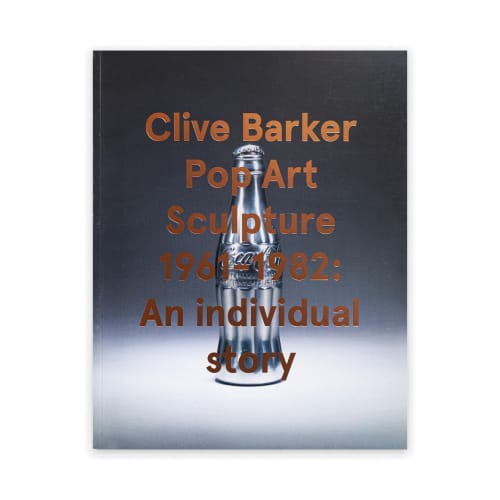Dimensions: 27 x 22 cm
Pages: 95
ISBN-13: 978-0947642-34-1
This Barker catalogue that accompanies a major exhibition at the Wolverhampton Art Gallery offers a representative survey of Barker’s development during the first two decades of his career, 1961-1981, when he established his unique style of sculpture.
For nearly five decades, Clive Barker has surprised the art lover with his Pop Art sculptures which bear testimony to his individual story. Barker’s works witness his typical love of disguising reality and play on contrasts, thus introducing an element of ambiguity, a quintessential practice of the Surrealists. By casting a found object, Barker turns the ephemeral into eternity and as such positions himself as an heir to Marcel Duchamp. On occasion Barker has employed the core ideas of Conceptual Art.
The works illustrate Barker’s key themes, inspirations and techniques. Barker’s transition from painting to sculpture and his early adherence to Pop Art is reflected in a series of corrugated ‘Targets’. Barker’s first use of divided labour, as displayed in his leather and zip works dating the early 1960s, preludes his full-scale chrome-plated objects which were first shown in 1968 at the Robert Fraser Gallery. The series of Coca Cola bottles, originated in 1966 with the birth of Barker’s first son Tad, became icons of the 1960s and the series of homages to favourite painters define Barker’s ambition to challenge the limits of the chrome-plating technique.
Barker’s early 1970s preoccupation with Classical sculpture, ‘War and Conflict’ and his later series of ‘Portraits’ are testimony to his love of Surrealism. During the 1970s Barker also employed the principles of Conceptual Art.
Five recent works have been added at the end of the catalogue to demonstrate the steadfast link between the past and the present, proof of Barker’s artistic resolve.
Barker’s initial critical and commercial successes of the 1960s and early 1970s ceased, when Pop Art was considered loud and vulgar in the 1980s Post-Modern epoch. Notwithstanding his temporary unfashionable status, Barker never wavered and remained loyal to his ideas. Ironically, it was during the Post-Modern 1980s that Jeff Koons fashioned the beginnings of a successful career with objects and techniques analogue to Barker’s.
Barker emerges as an artist with great talent to surprise, reinvent and disguise the found object.

